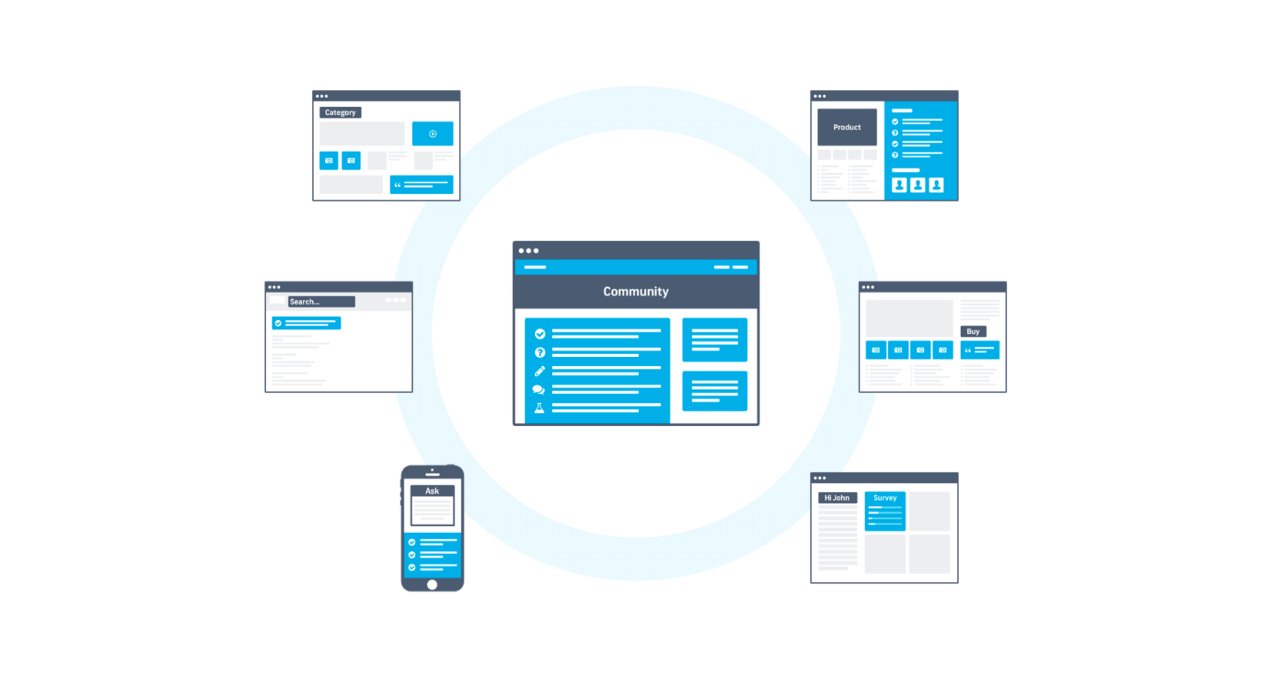The era of standalone online communities is over.
Well, not exactly. Brands like Sonos, T-Mobile, KPN and others continue to drive thousands of valuable conversations on their standalone communities.
But it’s true that forward-looking organizations are asking how they can get more mileage from the great content that their community members create.
Very often, that means figuring out how to leverage that community content on other channels—in blog posts, in FAQs, on e-commerce pages, and in marketing materials.

Why does this shift away from the standalone community make sense?
Better customer experience
For individual customers, the advantages of online communities are many. They can get questions answered and receive unbiased advice from their peers (other customers). They can share product feedback with company representatives, or vote on others’ suggestions. And they can keep up with announcements from their favorite brands.
Where standalone communities fall short, however, is that they’re a discrete destination that’s not always integrated into an organization’s sales funnel or support flow.
When so much attention in CX is given to streamlining both pre- and post-sales interactions (because today’s consumer values speed so highly ), standalone communities are less-than-ideal.
The solution is to infuse community content into other channels—enabling consumers to quickly and easily find the information they need.
Greater efficiency
One brand that’s already utilizing community content outside its community is T-Mobile. In the Netherlands, where it’s the largest wireless carrier, T-Mobile pushes community answers to both its FAQ page and to individual device help pages.
The reason is that T-Mobile found its customers to be more knowledgeable, in some cases, than its own support agents. It’s customers who keep the T-Mobile community up to date with device how-tos—so it made perfect sense for the company to tap into this valuable resource.
Not only does this strategy lighten the load for T-Mobile’s support department, it helps more customers more quickly. It enhances SEO, as well: When community content is repurposed elsewhere on a company’s website, people are more likely to find it via web search.
Read more about T-Mobile’s community strategy and download the case study to learn what sets it apart.

Even more user-generated content
T-Mobile is a leader in asking how it can get more value from its current community content. Yet an important part of its strategy is to keep its standalone community—which serves as a powerful content-generation tool—intact.
Today, about 20% of the support contacts that T-Mobile receives are handled on the community. That’s because users know that if they post there, they’ll get an authentic, trustworthy response from a peer.
This level of trust doesn’t emerge overnight: T-Mobile has invested years in making its community a useful customer destination. Still, taking the long view leads to more UGC and real financial returns.
As our head of customer success describes in this blog post, the per-user return of a community scales over time thanks to network effects. Utilizing community content on other channels amplifies that content, seeding this virtuous cycle. Learn more about this in our Ultimate Guide to Community Management.


